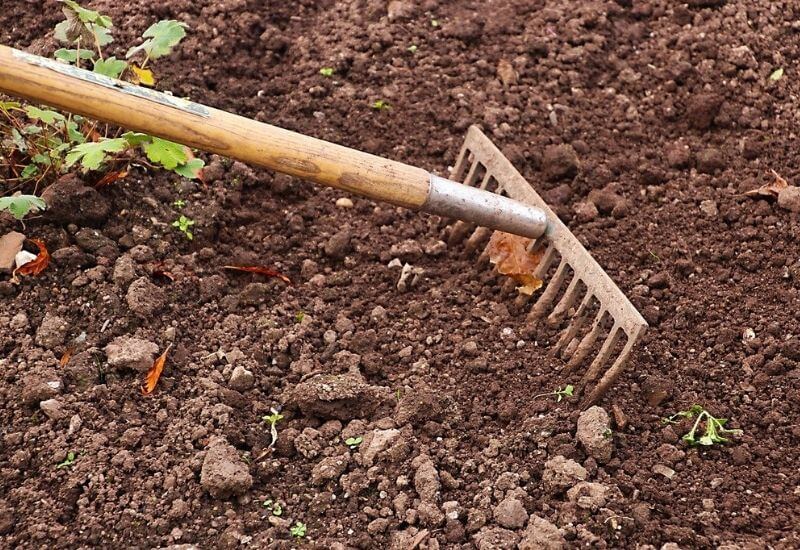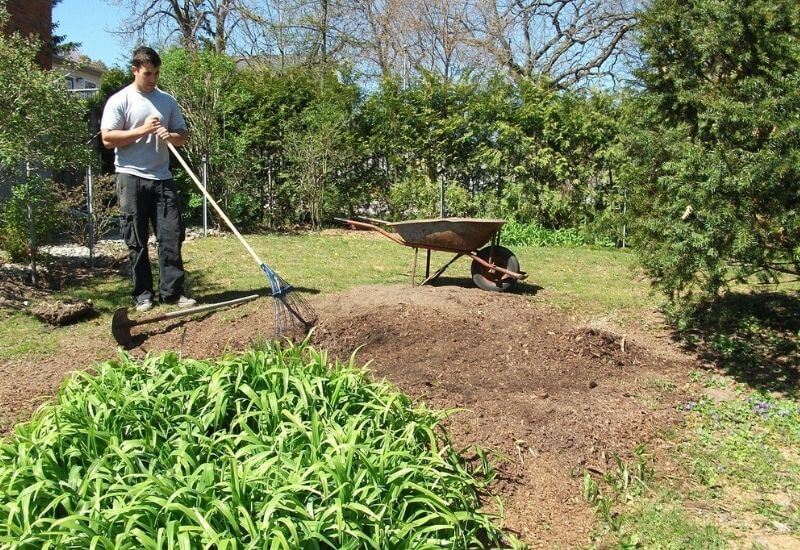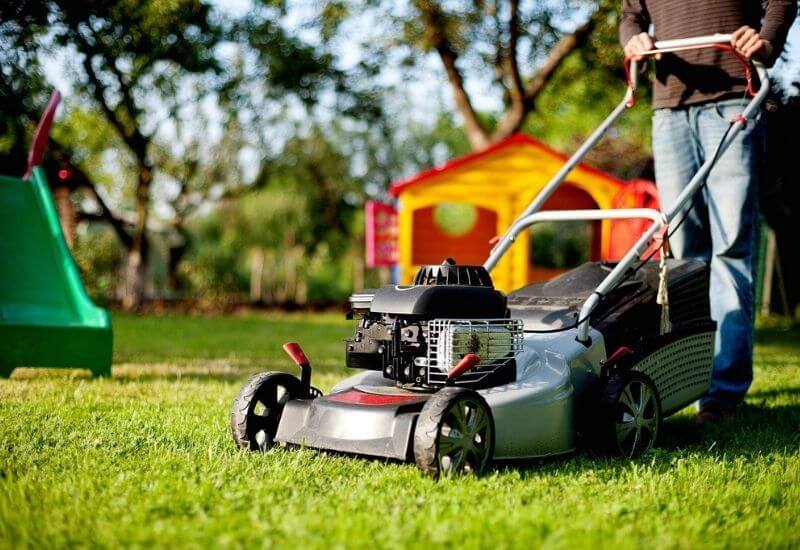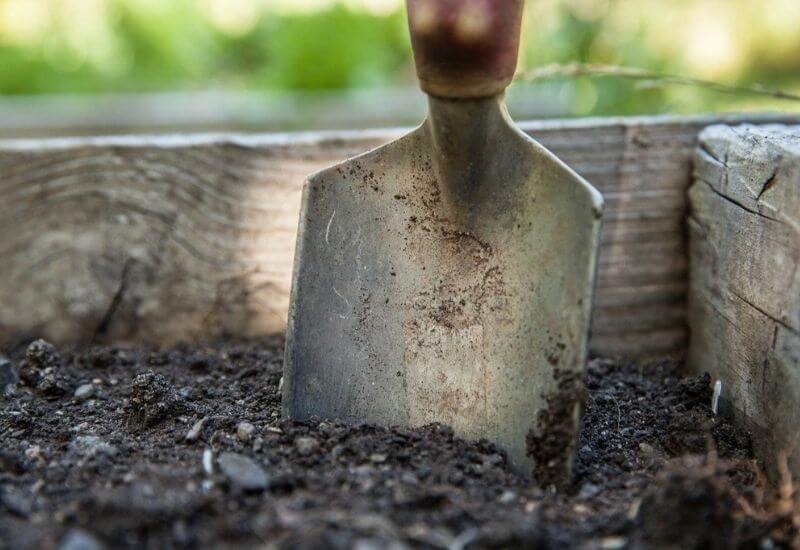When the warm sunlight starts to melt the snow into freshwater, the grass sheds its yellow tones and ventures towards the greener side, and the fresh smell of daffodils is in the air, you’ll know that spring is here.
These instances also depict that it’s time to ready your lawn for the upcoming warmer seasons. The timing of your spring lawn care depends on the climate in your region.
Today’s article focuses on lawn care tips for spring. Now you might be wondering how this article is going to raise your inner gardener. Take a look at some essential lawn care tips and get gardening.
By the end of this article, you and your lawn will be ready for the spring season.
Table of Contents
Lawn Care Tips for Spring
Without any detours, let’s dive right into the most efficient lawn care tips for spring.
Rake

Raking is the first step in lawn care tips for spring. A spring raking rids your lawn of the autumn leaves and grass that didn’t live through to witness bloom.
If you think that raking is going to prepare your lawn for the upcoming spring, you’re wrong. That’s not the whole picture. You still have thatch left to deal with, and that could be quite a task.
Let me refresh your memory a bit. Thatch exists as a layer around the base of the grass.
If this layer becomes too thick, it could prove to be unhealthy for your beloved lawn. Excess thatch could also cause difficulty in maneuvering your lawn mower. In that case, a dethatcher could be helpful.
Whether you did a decent job of raking the leaves in the fall, you must repeat in the spring season to eradicate the grass blades that perished in the winter. You mustn’t allow the dead grass to turn into thatch.
Raking will also loosen up the grass clumps that are a result of snow mold. New grass may face difficulty penetrating through these matted patches.
Overseed
A lawn in conjunction with bare patches, high traffic, or general neglect could require the filing of these patches. The process of sowing seeds over existing grass is called overseeding.
Bare patches are the result of several factors such as snow mold, dogs, exposure to engine exhaust, soil, compaction, and thatch.
The process is easy to follow. When you overseed, utilize a slow-release nitrogen fertilizer and then let the grass germinate for about five weeks. After germination is complete, apply a fast-release nitrogen fertilizer to balance the entire process.
The preferred time for overseeding in fall, but you could choose to do it beforehand if your lawn is in bad shape.
Aerate

If your lawn witnesses heavy traffic, such as children playing and running around, it could lead to soil compaction. Aeration works to help your lawn breathe.
The much-needed aeration protects your lawn against thatch. A lawn aerator creates perforations in the grass that allows water and air to penetrate through and reach the roots.
Aeration works well for a small lawn, but if you’re looking at a massive size, you may have to opt for core aeration. You must also try to remove as much thatch as possible while using a rake so that the grass has the opportunity to breathe and grow.
However, spring isn’t the ideal time for aerating your land. Since aeration involves creating openings in your lawn, it may become a living space for weeds that germinate in the spring.
Weeds germinate in the spring, and aerating the lawn may stir them up and provide an ideal home for them. However, if aeration is the need of the hour, you could go ahead with it while keeping tabs on the weeds.
Fertilize
Fertilizing plays a crucial role in the list of lawn care tips for spring. You could fertilize your lawn by using compost or mulching mowers.
However, people who prefer chemical fertilizers could opt for reliable and trustworthy brands for their garden needs.
When applying fertilizer, you must follow the instructions to the smallest detail. People who prefer organic fertilization may do a single turf-builder process in the early days of autumn to strengthen the root systems.
In summers, you could omit the use of fertilizers and depend on the nitrogen from the mulched grass shavings to feed your lawn.
The timing of fertilization depends on the region where you’re based and the climate it witnesses. If you fertilized your lawn in the last days of fall, the function of that fertilization could promote the growth of grass in the spring season.
Fertilizing your lawn before the heat of summer prepares it for the warmer climate. It’s the time where the grass is thriving and will slow down its carbohydrate production as summer approaches.
Many lawn experts recommend a small dose of turf-builder fertilization in the early to mid-fall when the grass still has a few weeks of growth before turning dormant. The process of fertilization at this point will strengthen the root system and prepare it for spring.
Check Your Lawn Mower
Springtime means the emergence of lawnmowers. But many times, it may happen that your lawn mower isn’t being as efficient. Why’s that?
The answer is simple. Your lawnmower needs servicing. Being shut for months may cause some changes to its working mechanism, and a tune-up may bring it back to normal.
Experts recommend that your lawnmowers should get at least one tune-up per year for a smooth performance. If you think that your lawnmower needs more than a tune-up, then it’s time to purchase a new one.
While selecting a mower, check to see if it’s right for the job. A power mower works well on large lawns. It saves time and energy. A riding mower will be useful if you possess more than an acre of land.
A battery-powered lawn mower is better on all levels. It uses no oil and hence is environment friendly. And most of the models exhibit less noise in comparison to the mowers that operate on gasoline.
Mow Your Lawn

Now that you’ve taken care of your lawnmower, it’s time to mow the lawn. You can initiate mowing when the ground is ready, and the grass has grown enough for cutting.
You must cut at the proper height of the grass and avoid mowing too low. It may cause issues with growth and promote the germination of weeds.
The wrong mowing technique may also allow for the shallow development of roots, which makes the lawn susceptible to dryness.
Another crucial rule of mowing the lawn is to create alternating patterns to avoid compacted soil. You could also move in different directions to eliminate ruts.
A sharp blade is what results in efficient mowing of the grass. You must change your blade during the servicing of the lawnmower to save time when using the machine.
While mowing, aim for taller grass as it helps to reduce water loss and prevents the growth of weeds. Taller grass possesses deep roots that reach water conveniently.
Lawn Irrigation

Watering your lawn is a critical part of lawn care tips for spring. Regular irrigation is a must because the heat may darken it and may end up appearing more brown than green.
Lawns that experience high traffic could be the perfect candidates for consistent irrigation. You should water your lawn early morning so that it gets optimum uptake.
Watering your lawn during late morning or evening isn’t so efficient. Most of the water may evaporate when the sun comes up. In the evening, the grass isn’t so active and may not take up the water.
A sprinkler system works best for the irrigation of lawns at regular intervals. The system is efficient and works automatically.
Apply Pre-Emergent Herbicides
Pre-emergent herbicides act as a barrier in the top layer of the soil that prevents the seeds from growing roots. Pre-emergent herbicides address the weeds before their seeds can emerge.
Which herbicide to use depends on the fact if a weed is annual or perennial. Crabgrass is a weed that requires both pre and post-emergent herbicides.
Crabgrass initiates its attack on your lawn in the early days of spring. If you locate a problem with Crabgrass, then apply the fertilizer and pre-emergent herbicide simultaneously or use a combination formula.
If you’re working with pre-emergent herbicides, avoid core aeration until the fall as it may perforate the shield and tamper with the effectiveness of the weed-killer.
Pre-emergent herbicides also function against the grass seeds. If you want the growth of new grass, it might be difficult if you’re using a pre-emergent herbicide.
Apply Post-Emergent Herbicides
Herbicides work efficiently to keep your lawn safe from weeds. But the application needs to be done in the right quantity; otherwise, it may do more harm than good.
Dandelions are flowers that may appear elegant but are quite stubborn. They bloom at the beginning of spring and could get out of hand.
To eliminate this weed, you should snap off their stems before they produce seeds. You could also dig them out if you’re feeling more ambitious.
If you choose to spray a post-emergent herbicide, it’ll be beneficial to use it during fall than the spring.
However, before you choose a herbicide, make sure to find out if it’s suitable for your lawn. A well-kept lawn will discourage the growth of weeds and reduce the requirement of herbicides.
Soil Assessment

If you find moss around your lawn, that means the soil is acidic. Grass grows efficiently in soil with a neutral pH value. You could neutralize the acidic soil by putting in lime to it.
However, this is not a permanent solution, and the lime takes time to settle in the soil. Before you take this step, you could send a sample of your soil to the designated department to determine the soil’s acidity.
You could get in touch with that department that puts forth information related to agriculture and horticulture, check out their website, or visit the nearest extension office.
The department could guide you as to the required amount of lime you’ll need per square foot.
Alkaline soil could also pose issues for your lawn. So, the use of lime should only be as a corrective measure.
Get Rid of Pests
Pests could severely damage your lawn if you don’t take preventive measures to curb their impact. Fire Ants are one cush category that could bring doom to your lawn. The proper use of insecticides is what could protect your lawn.
Crickets and grubs are other categories that wreak havoc on the health of the grass. However, the best time to deal with these pests is in summer.
The proper maintenance of your lawn in the spring and summer seasons is necessary, as that’s the time when new grass can grow. You could utilize the fall and winter months to start preparing for the upcoming spring.
Getting rid of pests is one of the most crucial lawn care tips for spring as it helps to prevent excess damage.
Conclusion
Now you know the steps that are imperative for the care of your lawn. Whether it’s the simple act of watering your lawn or intense raking, lawn care tips for springs are a must-have knowledge.
A well-fed lawn will appear lively and colorful and work according to the laws of nature. So, call out your inner gardener and get gardening.

